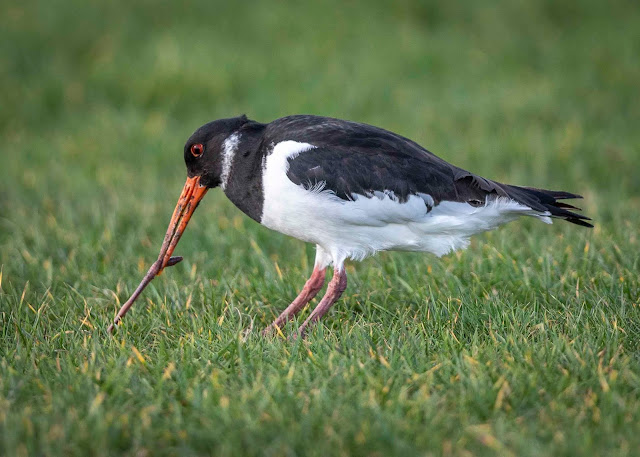At some point in the past decade, and I don't know when, these two races of Dark-throated Thrush were 'promoted' to full specific status. The Dark-throated Thrush was no more. It was now Black-throated Thrush Turdus atrogularis and Red-throated Thrush Turdus ruficollis.The two 'new' species are easily separated in the field. The Black-throated has grey upperparts, a black face and chest with the rest of the underparts being off-white whereas the Red-throated has a reddish-chestnut face and chest and also the outer tail feathers are a rufous-red. The tail of a Black-throated Thrush is all dark and does not display any rufous or reddish tones.
So what do you have in front of you when a bird shows the black face and chest of a Black-throated Thrush but also shows, quite clearly, chestnut-red in the outer tail feathers? The conclusion would be that it is an intergrade or hybrid between the two species. Back when there was just a Dark-throated Thrush - this would be it - no problem. Now it is different. Can you put a name to this bird? Is it a Red-throated or a Black-throated? Is it a hybrid and therefore not a full 'recognised' species and so it is a 'bird with no name'.
I look forward to see what the BBRC make of this!
In some of the following photographs, all taken of the bird in Grimsby on 12th February 2020, the rufous/chestnut in the outer tail feathers is quite visible.
 |
| These two shots of the bird perched in a tree clearly show the rufous-reddish tones to the outer tail feathers. |
 |
Black-throated x Red-throated Thrush Grimsby February 2020
For a 'pure' Black-throated Thrush the tail should be all dark with no hint of the rufous-red visible on this bird.
|



















































